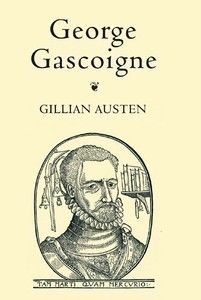1535 – October 7, 1577
He sailed through as a soldier of fortune to the Low Countries in 1572, and was driven by stress of weather to Brill, which luckily for him had just fallen into the hands of the Dutch. He obtained a captain's commission, and took an active part in the campaigns of the next two years, during which he acquired a profound dislike of the Dutch, and a great admiration for William of Orange, who had personally intervened on his behalf in a quarrel with his colonel, and secured him against the suspicion caused by his clandestine visits to a lady at the Hague.
Taken prisoner after the evacuation of Valkenburg by the English troops, he was sent to England in the autumn of 1574. He dedicated to Lord Grey of Wilton the story of his adventures, The Fruites of Warres (printed in the edition of 1575) and Gascoigne's Voyage into Hollande. In 1575 he had a share in devising the masques, published in the next year as The Princely Pleasures at the Courte at Kenelworth, which celebrated the queen's visit to the Earl of Leicester. At Woodstock in 1575 he delivered a prose speech before Elizabeth, and presented her with the Pleasant Tale of Hemetes the Hermit in four languages.Most of his works were actually published during the last years of his life, after his return from the wars.
Gascoigne’s final works revolve around the military mission to Antwerp in 1576, and they serve as the capstone to his continuing quest to portray himself as a moral crusader. The Grief of Joye, one of two final works, was presented to the queen on New Year’s Day. Austen devotes much attention to the lyrics in it.
Gascoigne’s final works revolve around the military mission to Antwerp in 1576, and they serve as the capstone to his continuing quest to portray himself as a moral crusader. The Grief of Joye, one of two final works, was presented to the queen on New Year’s Day. Austen devotes much attention to the lyrics in it.
